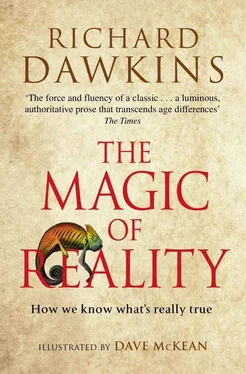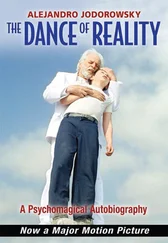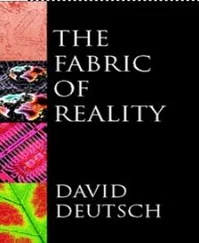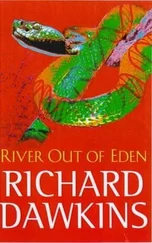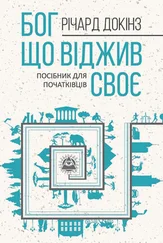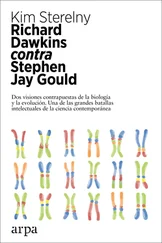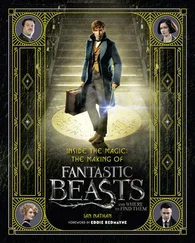As for pumpkins turning into coaches, magic spells are just as certainly ruled out for them as they are for frogs and princes. Coaches don’t evolve – or at least, not naturally, in the same way that frogs and princes do. But coaches – along with airliners and pickaxes, computers and flint arrowheads – are made by humans who did evolve. Human brains and human hands evolved by natural selection, just as surely as newts’ tails and frogs’ legs did. And human brains, once they had evolved, were able to design and create coaches and cars, scissors and symphonies, washing machines and watches. Once again, no magic. Once again, no trickery. Once again, everything beautifully and simply explained.
In the rest of this book I want to show you that the real world, as understood scientifically, has magic of its own – the kind I call poetic magic: an inspiring beauty which is all the more magical because it is real and because we can understand how it works. Next to the true beauty and magic of the real world, supernatural spells and stage tricks seem cheap and tawdry by comparison. The magic of reality is neither supernatural nor a trick, but – quite simply – wonderful. Wonderful, and real. Wonderful because real.
2. WHO WAS THE FIRST PERSON?
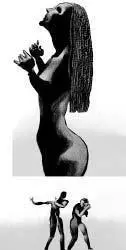
MOST CHAPTERS IN this book are headed by a question. My purpose is to answer the question, or at least give the best possible answer, which is the answer of science. But I shall usually begin with some mythical answers because they are colourful and interesting, and real people have believed them. Some people still do.
All peoples around the world have origin myths, to account for where they came from. Many tribal origin myths talk only about that one particular tribe – as though other tribes don’t count! In the same way, many tribes have a rule that they mustn’t kill people – but ‘people’ turns out to mean only others of your own tribe. Killing members of other tribes is just fine!
Here’s a typical origin myth, from a group of Tasmanian aborigines. A god called Moinee was defeated by a rival god called Dromerdeener in a terrible battle up in the stars. Moinee fell out of the stars down to Tasmania to die. Before he died, he wanted to give a last blessing to his final resting place, so he decided to create humans. But he was in such a hurry, knowing he was dying, that he forgot to give them knees; and (no doubt distracted by his plight) he absent-mindedly gave them big tails like kangaroos, which meant they couldn’t sit down. Then he died. The people hated having kangaroo tails and no knees, and they cried out to the heavens for help.
The mighty Dromerdeener, who was still roaring around the sky on his victory parade, heard their cry and came down to Tasmania to see what the matter was. He took pity on the people, gave them bendable knees and cut off their inconvenient kangaroo tails so they could all sit down at last; and they lived happily ever after.
Quite often we meet different versions of the same myth. That’s not surprising, because people often change details while telling tales around the camp fire, so local versions of the stories drift apart. In a different telling of this Tasmanian myth, Moinee created the first man, called Parlevar, up in the sky. Parlevar couldn’t sit down because he had a tail like a kangaroo and unbendable knees. As before, the rival star god Dromerdeener came to the rescue. He gave Parlevar proper knees and cut off his tail, healing the wound with grease. Parlevar then came down to Tasmania, walking along the sky road (the Milky Way).
The Hebrew tribes of the Middle East had only a single god, whom they regarded as superior to the gods of rival tribes. He had various names, none of which they were allowed to say. He made the first man out of dust and called him Adam (which just means ‘man’). He deliberately made Adam like himself. Indeed, most of the gods of history were portrayed as men (or sometimes women), often of giant size and always with supernatural powers.
The god placed Adam in a beautiful garden called Eden, filled with trees whose fruit Adam was encouraged to eat – with one exception. This forbidden tree was the ‘tree of knowledge of good and evil’, and the god left Adam in no doubt that he must never eat its fruit.
The god then realized that Adam might be lonely all by himself, and wanted to do something about it. At this point – as with the story of Dromerdeener and Moinee – there are two versions of the myth, both found in the biblical book of Genesis. In the more colourful version, the god made all the animals as Adam’s helpers, then decided that there was still something missing: a woman! So he gave Adam a general anaesthetic, cut him open, removed one rib and stitched him up again. Then he grew a woman from the rib, rather as you grow a flower from a cutting. He named her Eve and presented her to Adam as his wife.
Unfortunately, there was a wicked snake in the garden, who approached Eve and persuaded her to give Adam the forbidden fruit from the tree of knowledge of good and evil. Adam and Eve ate the fruit and promptly acquired the knowledge that they were naked. This embarrassed them, and they made themselves aprons out of fig leaves. When the god noticed this he was furious with them for eating the fruit and acquiring knowledge – losing their innocence, I suppose. He threw them out of the garden, and condemned them and all their descendants to a life of hardship and pain. To this day, the story of Adam’s and Eve’s terrible disobedience is still taken seriously by many people under the name of ‘original sin’. Some people even believe we have all inherited this ‘original sin’ from Adam (although many of them admit that Adam never actually existed!), and share in his guilt.
The Norse peoples of Scandinavia, famous as Viking seafarers, had lots of gods, as the Greeks and Romans did. The name of their chief god was Odin, sometimes called Wotan or Woden, from which we get our ‘Wednesday’. (‘Thursday’ comes from another Norse god, Thor, the god of thunder, which he made with his mighty hammer.)
One day Odin was walking along the seashore with his brothers, who were also gods, and they came upon two tree trunks.
One of these tree trunks they turned into the first man, whom they called ‘Ask’, and the other they turned into the first woman, naming her ‘Embla’. Having created the bodies of the first man and first woman, the brother gods then gave them the breath of life, followed by consciousness, faces and the gift of speech.
Why tree trunks, I wonder? Why not icicles or sand dunes? Isn’t it fascinating to wonder who made such stories up, and why? Presumably the original inventors of all these myths knew they were fiction at the moment when they made them up. Or do you think many different people came up with different parts of the stories, at different times and in different places, and other people later put them together, perhaps changing some of them, without realizing that the various bits were originally just made up?
Stories are fun, and we all love repeating them. But when we hear a colourful story, whether it is an ancient myth or a modern ‘urban legend’ whizzing around the internet, it is also worth stopping to ask whether it – or any part of it – is true.
So let’s ask ourselves that question – Who was the first person? – and take a look at the true, scientific answer.
Who was the first person really ?
This may surprise you, but there never was a first person – because every person had to have parents, and those parents had to be people too! Same with rabbits. There never was a first rabbit, never was a first crocodile, never a first dragonfly. Every creature ever born belonged to the same species as its parents (with perhaps a very small number of exceptions, which I shall ignore here). So that must mean that every creature ever born belonged to the same species as its grandparents. And its great-grandparents. And its great-great-grandparents. And so on for ever.
Читать дальше
